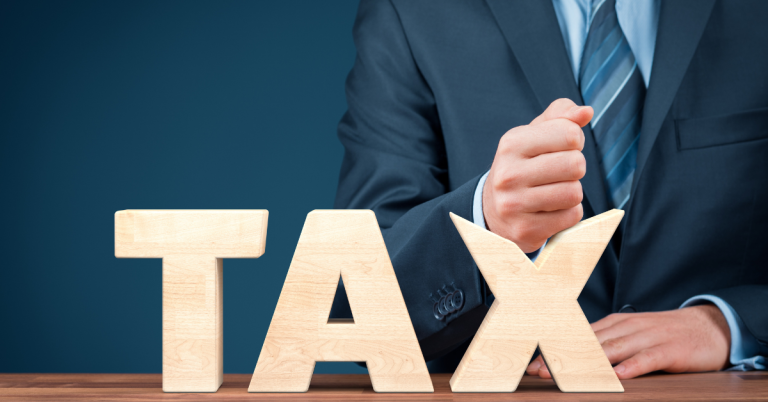Self Employed Pension Schemes: Overview
The government wants to make it easier for self-employed workers to save into personal pension schemes. A consultation paper published today suggests that employers could offer employees automatic enrolment into a scheme run by the National Employment Savings Trust (Nest), where contributions are matched by the employer. This would allow employees to put aside up to £20,000 per year without having to do anything extra themselves. If the employee earns less than £8,100 a year, Nest will pay 0.5% of his/her earnings into the scheme each month, while those earning over £8,100 a month will contribute 3%. Employees will be able to choose whether to take their savings out early, or keep it invested until retirement.
The government says that making it easier for self- employed people to save into a pension scheme will help them build up a nest egg for their retirement. It estimates that the move could raise around £2 billion a year from employers. Currently, just under half of all small businesses provide some form of pension plan, according to research firm PwC. However, many of these plans are limited to salaried employees, and there is no obligation for employers to offer such plans to freelancers or contractors.
A study by the Institute for Fiscal Studies found that almost three quarters of British workers aged 25-64 had no workplace pension whatsoever. In addition, the average worker receives about £1,300 less in benefits than he/she would have received if they had been enrolled in a workplace pension.

Receiving the State Pension as a self-employed individual
Self-employment entitles you to receive the same benefits as employees. This includes the State Pension. But it doesn’t mean you don’t have to work – you still need to earn a certain amount over a period of time.
If you’ve been contracting out, you might find yourself paying too much tax. In fact, you could end up getting less money than someone earning the full salary.
To calculate how much you’d get, we need to look at what you’ve earned since National Insurance contributions began. We’ll also take into account any previous payments you received.
You can apply online or by Post. For an online application you’ll need to upload some proof of your identity and address. If you live outside England, Scotland or Wales, you’ll need to mail in your application form.
The deadline for submitting applications is April 30th 2020.
Do not depend solely on the State Pension.
Many people think that the State Pensions alone will provide them with sufficient income to live comfortably during retirement. However, it is important to consider other sources of income besides the State Pension. For example, many people are surprised to learn that the average pensioner receives around £1,800 per month. This amount could cover most basic living costs, such as food, heating bills, clothing, and transport. But it won’t go far towards paying off mortgage repayments, buying holiday homes, or funding leisure activities.
The State Pension is based on earnings history and is calculated according to the number of years worked and the age at which someone retires. There are different types of State Pension depending on whether you are male or female, married or single, and how old you are when you retire.
In addition to the State Pension, there are several other ways to save for retirement. These include pensions, ISAs, cash ISAs, and regular contributions into a workplace pension scheme. You might also want to consider investing some of your savings in property or shares.
If you don’t already have any investments set up, you should start now. If you do have existing investments, make sure you review your portfolio regularly. You might find that you can increase your returns by making changes to your investment strategy.
You should always check what type of financial products you are eligible for. Some employers offer their employees a range of benefits including life insurance, health care plans, childcare vouchers, and discounts on gym memberships. These perks can help you save money and improve your lifestyle.
If you work part-time, you can still contribute to a pension scheme. In fact, you can even take advantage of tax breaks to boost your contribution levels.
Make the most of your retirement fund.
Transferring multiple pensions into a single one can simplify things and save you money. But it’s important to check whether your existing pensions can be transferred before doing so. And tracing missing pensions can help find out where your money went. Here are some tips on how to make the most of your pension pots.
Free Midlife Pension Review
The government wants to help people make sense of what they’re entitled to, and how much it might cost. In partnership with PensionBee, we’ve launched a free midlife review tool, which helps you understand your options. You’ll find out whether you qualify for a state pension, and if so, how much you could receive. If you do qualify, you’ll learn about the costs involved, and how much you’d save by switching to an employer-based pension.
Which pension plans are available for the self-employed?
There are three main types of personal pension – stakeholder, ordinary and self-invested. These differ mainly in how much money you put into it and what happens if you earn more than £10,000 a year. Here we explain the differences between each type of scheme.
Ordinary Personal Pension
This is the most basic form of personal pension. You pay a set amount every month, regardless of whether you make any money or lose any money. This is normally the cheapest option.
Stakeholder Pensions
These are similar to ordinary pensions, except that you receive a lump sum rather than monthly payments. If you take out a stakeholder pension, you won’t be able to benefit from any additional income you might make over £10,000 a tax year. But you’ll still get your initial payment no matter what.
Self-Invested Personal Pension
You’re probably familiar with this one. With a self-invested pension, you decide how to invest your money. There are many options, including stocks, bonds, funds, property and cash. You could even buy shares in companies that you work for. And there are fees involved. So don’t go overboard.
NEST pensions
Self-employed people can now also become members of NEST pension scheme. This is good news for those who don’t want to pay high fees to fund their retirement accounts. NEST offers three types of plans – Basic, Standard and Enhanced. For each plan, there is a monthly fee. However, the Basic Plan costs just £5 per month, while the Standard Plan costs £10 per month. In addition, you’ll also have to pay a contribution of 4% of your salary towards your pension. If you’re a freelancer, it could work out cheaper to use a personal pension provider like My Pension Plan or BetterStart.
The Enhanced Plan costs £15 per month and includes additional features such as tax relief, employer contributions and a guaranteed income stream. You can choose to receive your pension either in one lump sum or over 10 annual payments.
If you’re still unsure whether to go for NEST, check out our guide to choosing a pension provider.
Financial advice
The government says it wants to make sure people understand how much money they could lose if they invested poorly. So it has launched a campaign to encourage consumers to find out whether they need financial advice.
Regulated products are backed by regulators such as the Financial Conduct Authority, giving you protection if anything goes wrong. And regulated firms must meet certain standards, including having enough funds to cover customers’ losses.
A financial adviser can recommend the most suitable investments for you – depending on your needs, risk tolerance and goals. They’ll look at your current situation, your long term plans and your personal circumstances. You might want to consider different types of investments, like shares, bonds, cash savings accounts or property.
You don’t have to do everything yourself. But you do need to know about the risks involved. If you’re unsure, ask your financial adviser for guidance.
What is the annual allowance?
The annual allowance is based on your income and whether you are paying National Insurance Contributions (NICs). NICs are paid by employers and employees and go towards funding the state pension system.
There is a cap on the total amount of money you can contribute to your pension per annum. This depends on your earnings and the amount you pay into your pension scheme.
If you do not make enough to meet the annual allowance, you will pay tax on all of your pension contributions. However, there is an annual allowance which allows you to reclaim some of those payments.
You can carry forward any unused amounts from the previous three tax years. Any unused amounts can be carried over to the following tax year.
Carrying forward allows you to reduce your tax bill in future years. For example, if you had £1,000 left over from last year, you could use it to reduce your tax bill this year.
Frequently Asked Questions
How much to contribute to a pension
The government says it wants people to retire later rather than sooner – but does that mean we’re going to need to save more money? Research published today by the Office for Budget Responsibility (OBR) found that the average amount needed to maintain a decent standard of living in retirement could rise to 70 per cent of pre-retirement earnings.
This compares with the current figure of around 60 per cent. However, the OBR warned that the figures are based on “a very specific set of assumptions”. These include paying off mortgages and having no children. If you don’t do either of those things, the amount you need to save will increase. So what might a typical person need to save each week to achieve this level of savings? There are three main ways to calculate this:
A lifetime allowance (£144,000), a basic annual allowance (£15,600) and a flexible annual allowance (£16,400). The first method uses the full lifetime allowance and assumes you’ll live to 95. Under this scenario, you’d need to earn £1,500 a week to fund a decent standard of living. For someone aged 65, this equates to just over £50,000 a year. The second method takes account of inflation and assumes you’ll live until 85. In this case, you’d need to make £2,200 a week to cover costs. And finally, the third method allows for a shorter life expectancy and requires you to save £3,300 a week to enjoy a good standard of living.
How to evaluate a pension
If you’re looking for a retirement income, there are plenty of options out there. But choosing one isn’t always easy. Here we explain what you need to consider when deciding whether to take a defined benefit pension or a defined contribution pension.
In a defined benefit pension, you pay a set amount each month and receive a guaranteed payout based on how long you work. In return, you give up some control over your money. You don’t decide how much to contribute, nor do you decide how much to withdraw as you get older. Instead, your employer decides those things for you.
A defined contribution pension offers similar benefits, but the contributions come directly from you. They’re usually cheaper than defined benefit pensions because you make less regular payments, but they offer fewer guarantees.






